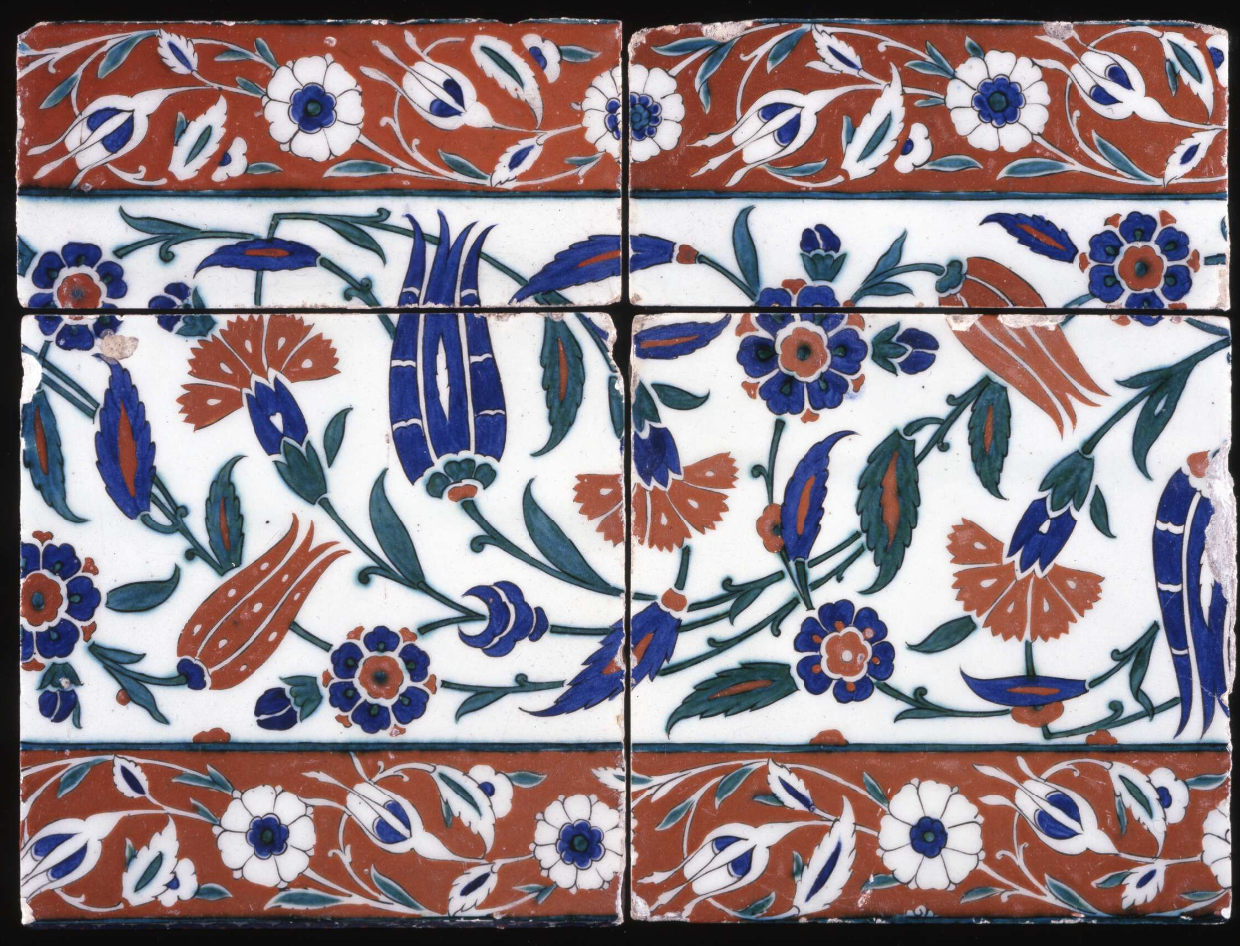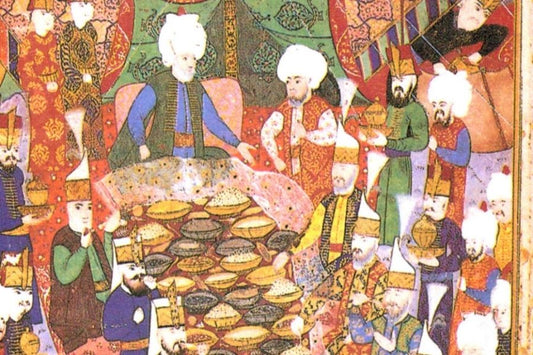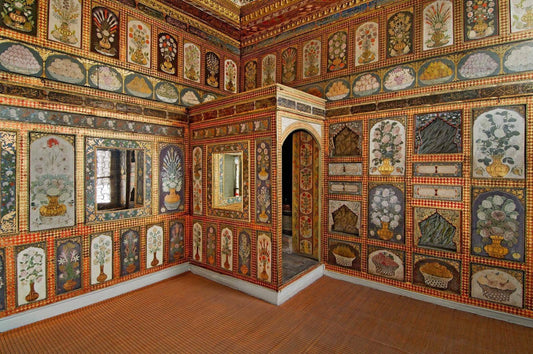Iznik tiles, one of the dazzling artistic legacies of the Ottoman Empire, have pushed the boundaries of art for centuries, transforming into a cultural phenomenon. These bright and colorful ceramics once graced the walls of Ottoman palaces and today form the most valuable collections of museums around the world. The story of Iznik tiles represents not only an aesthetic achievement but also a symbol of technical innovation and cultural synthesis. In this article, we will explore the rich history of Iznik tiles, their role at the intersection of art and science, and how they have evolved over time. As we delve into the story behind these captivating works of art, we will embark on a journey from the Ottoman capitals to the present day. So, how were these unique works created and how did they reach our present day? Join us on this captivating journey as we enter the vibrant world of Iznik tiles to discover their rich history and how art comes to life. In this adventure spanning the Ottoman era to the present day, we will journey deep into history through the stories told by each tile.
Tile Masters in Ottoman Capitals
Before tile production began in Iznik, tiles used in religious structures such as mosques and tombs in Ottoman capitals (Bursa, Edirne, and Istanbul) were produced by traveling foreign craftsmen in workshops established near construction sites. During this period, products were made with hard white clay employing advanced techniques and decorated with rich motifs. However, in Iznik, glazed vessels with soft red clay were still produced for the daily use of the masses, demonstrating the diversity of tile art in the region.
Synthesis of East and West in Iznik Tiles
Patterns unique to Chinese porcelain, which dominated the Middle Eastern market from the 14th century onward, began to be used in Iznik around 1400. By the late 15th century, ceramic production in Iznik, a city of just 400 households, had entered a new era with the production of blue-on-white patterned tiles. The stylistic development seen in Iznik tiles during this period can be attributed to the settlement of masters from various regions in the city and the established relationship with the Nakkaşhane (Ceramic Workshop) opened by Mehmed the Conqueror in Topkapı Palace.
Reflections of Tile Art in Ottoman Palaces
During this period, palace masters diversified and arranged new compositions using rumi and hatayi motifs, creating a new palace style that marked a period. This new style first manifested itself in illumination and bookbinding, and soon spread to other areas through tile art. This transformation continued during the reigns of Bayezid II and Selim I.
The Golden Age of Blue-White Iznik Tiles
The level reached by the early Iznik blue-and-white tiles was unprecedented in any Islamic country. This success stemmed in part from the mastery of Iznik masters in imitating Chinese porcelain. During the same period, other tile masters in the Middle East also made similar experiments, but were not as successful as their Iznik counterparts. This high quality continued to develop until the 16th century. The level reached by the early Iznik blue-and-white tiles was unprecedented in any Islamic country. This success stemmed in part from the mastery of Iznik masters in imitating Chinese porcelain. During the same period, other tile masters in the Middle East also made similar experiments, but were not as successful as their Iznik counterparts. This high quality continued to develop until the 16th century. The elegant and symbolic blue-and-white Iznik tiles of this period can be seen today in specially designed products such as the Footed Bowl and the Rumi & Bulut .
Topkapi Palace and the Uniqueness of Iznik Tiles
In addition to ceramic vessels, Iznik workshops also produced wall tiles based on patterns developed in palace workshops. The finest wall tiles produced during this period were widely used in various pavilions at Topkapı Palace, such as the Circumcision Room of the Bağdat Kiosk. However, it is interesting that ceramic vessels such as plates, saucers, cups, and pitchers produced during the same period are not found in Topkapı Palace. This becomes clear when examining life in 16th- and 17th-century Istanbul. According to archival documents, during this period, when the highest quality Iznik ceramics were produced, there was a growing interest in foreign products among the elite. Chinese porcelain was considered far more valuable than Iznik ceramics, and Iznik products were purchased only for everyday use.
The Rarity of Iznik Tiles and the Istanbul Fires
The rarity of İznik ceramics and the abundance of Chinese porcelain in palace collections reflect the social and cultural preferences of the period. Fires in Istanbul also contributed to this situation. Since most of the city's structures were wooden until the 19th century, fires caused extensive damage. The 1757 fire, in particular, destroyed half of the city, starting in Cibali, destroying 150 mosques, 130 madrasas, 335 mills, 36 baths, 34,200 shops, and 77,400 houses. As a result of these fires, ceramic vessels in shops, vizier palaces, and the mansions of high-ranking officials and wealthy merchants were also damaged or destroyed. Therefore, the number of surviving İznik tiles is quite limited, and the artifacts are currently exhibited in the Tiled Kiosk and Archaeological Museums.
European Interest in Iznik Ceramics
The fascination with imported goods in the 16th century continued into the 18th and 19th centuries, this time with European porcelain gaining in value. Consequently, Iznik ceramics were again disregarded, and those salvaged from the fires were discarded or sold. However, starting in the 16th century, Europeans developed a keen interest in Iznik tiles, and even occasionally attempted to imitate them. A prime example is a set of ten plates featuring the coat of arms of a European family, decorated with Italian majolica in Iznik in the last quarter of the 16th century.
The Worldwide Distribution of Iznik Ceramics
By the end of the 16th century, Iznik ceramics had become a commercial commodity. With increasing orders from both domestic and international sources, Iznik masters began to postpone their requests for wall tiles from the palace. A published decree indicates that the palace complained about the delayed orders. The existence of Iznik plates, which today adorn the walls of many churches in Southern Europe, and Iznik ceramic vessels with precious metal inserts added in 16th-century England, is evidence that many foreigners purchased Iznik ceramics during this period.
Global Collectors of Iznik Tiles
With the growing interest in the East and exotic lands in the 19th century, numerous Western merchants, travelers, and diplomats began collecting Iznik tiles. Iznik tiles have been found in many locations outside Istanbul, including Rhodes, Damascus, and Jerusalem. The Iznik tiles exhibited in many museums around the world today were created from these pieces.
Iznik Tiles: An Artistic Journey from History to the Present
In this article, we examine the significant place İznik tiles hold in Ottoman art, their technical developments, and their cultural influence. Whether these elegant works adorn the walls of Ottoman palaces or serve as coveted pieces in contemporary museums, İznik tiles represent a legacy intertwined with art and history, extending from the Ottoman era to the present day. Each of these unique works of art tells its own story and reflects our cultural richness. If you'd like to experience this historical and aesthetic beauty firsthand and bring it into your living spaces, we invite you to explore our collection . Here, you can discover our unique, handcrafted designs inspired by modern interpretations of historic İznik tiles and bring a piece of this unique art into your home.




